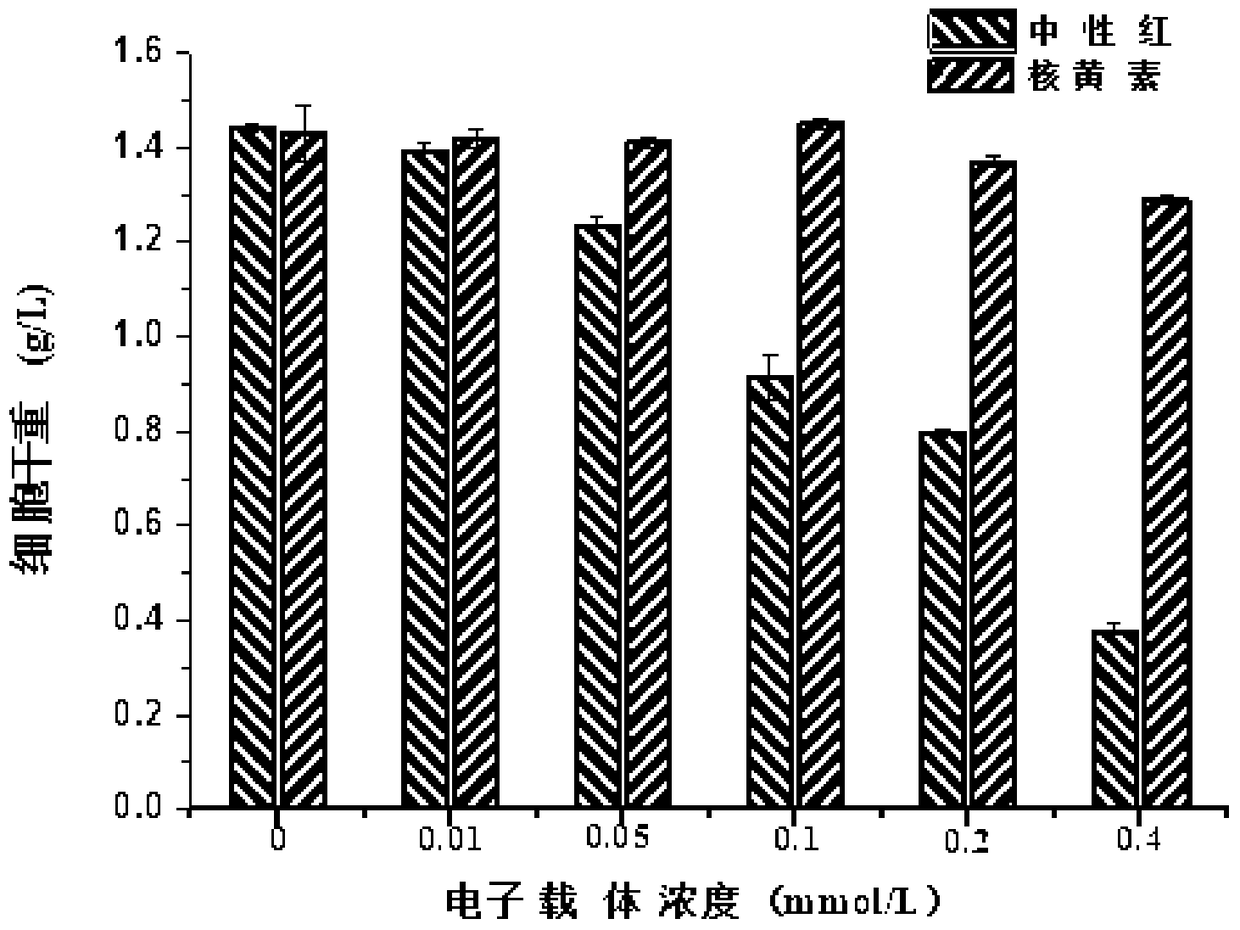A method based on an electrochemical system to regulate intracellular reducing power regeneration and fermentation to produce succinic acid
A succinic acid production, electrochemical technology, applied in the direction of microorganism-based methods, biochemical equipment and methods, fermentation, etc., can solve the problems of differences in electrochemical regulation methods of reducing power, etc.
- Summary
- Abstract
- Description
- Claims
- Application Information
AI Technical Summary
Problems solved by technology
Method used
Image
Examples
Embodiment 1
[0043] This example illustrates that Escherichia coli ( Escherichia coli ) AFP111 method for anaerobic fermentation.
[0044] Escherichia coli( Escherichia coli ) The AFP111 anaerobic fermentation method is as follows:
[0045] The Escherichia coli in the cryopreservation tube ( Escherichia coli ) AFP111 as the starting strain was inoculated with 1% (v / v) inoculum in a test tube containing 5mL seed culture medium, cultivated at 37°C, 200r / min for 12h to obtain the first-level seed solution; %(V / v) inoculum was inoculated into a 500mL triangular shake flask containing 100mL seed culture medium, cultured at 37°C and 200r / min for 6h to obtain a secondary seed solution. The secondary seed liquid was inoculated into a 700mL chemostat device containing 450mL of fermentation medium at an inoculum of 10% (v / v). At the same time, sterile carbon dioxide was continuously introduced into the chemostat to maintain anaerobic surroundings. Regularly aseptic samples are taken during the fermenta...
Embodiment 2
[0051] This example illustrates the use of Escherichia coli under the condition of -0.65V and the addition of 0.05mmol / L neutral red ( Escherichia coli ) AFP111 is a one-step electrochemical anaerobic fermentation method.
[0052] Escherichia coli( Escherichia coli ) The one-step electrochemical anaerobic fermentation method of AFP111 is as follows:
[0053] The Escherichia coli in the cryopreservation tube ( Escherichia coli ) AFP111 as the starting strain was inoculated with 1% (v / v) inoculum in a test tube containing 5mL seed culture medium, cultivated at 37°C, 200r / min for 12h to obtain the first-level seed solution; %(V / v) inoculum was inoculated into a 500mL triangular shake flask containing 100mL seed culture medium, cultured at 37°C and 200r / min for 6h to obtain a secondary seed solution. The secondary seed liquid was inoculated into a 700mL cathode chamber containing 450mL of fermentation medium at an inoculum of 10% (v / v). At the same time, a voltage of -0.65V was applied...
Embodiment 3
[0059] This example illustrates the use of Escherichia coli under the condition of -0.65V and 0.1mmol / L riboflavin ( Escherichia coli ) AFP111 is a one-step electrochemical anaerobic fermentation method.
[0060] Escherichia coli( Escherichia coli ) The one-step electrochemical anaerobic fermentation method of AFP111 is as follows:
[0061] The Escherichia coli in the cryopreservation tube ( Escherichia coli ) AFP111 as the starting strain was inoculated with 1% (v / v) inoculum in a test tube containing 5mL seed culture medium, cultivated at 37°C, 200r / min for 12h to obtain the first-level seed solution; %(V / v) inoculum was inoculated into a 500mL triangular shake flask containing 100mL seed culture medium, cultured at 37°C and 200r / min for 6h to obtain a secondary seed solution. The secondary seed liquid was inoculated into a 700mL cathode chamber containing 450mL of fermentation medium at an inoculum of 10% (v / v). At the same time, a voltage of -0.21V was applied to the cathode ch...
PUM
 Login to View More
Login to View More Abstract
Description
Claims
Application Information
 Login to View More
Login to View More - R&D
- Intellectual Property
- Life Sciences
- Materials
- Tech Scout
- Unparalleled Data Quality
- Higher Quality Content
- 60% Fewer Hallucinations
Browse by: Latest US Patents, China's latest patents, Technical Efficacy Thesaurus, Application Domain, Technology Topic, Popular Technical Reports.
© 2025 PatSnap. All rights reserved.Legal|Privacy policy|Modern Slavery Act Transparency Statement|Sitemap|About US| Contact US: help@patsnap.com



